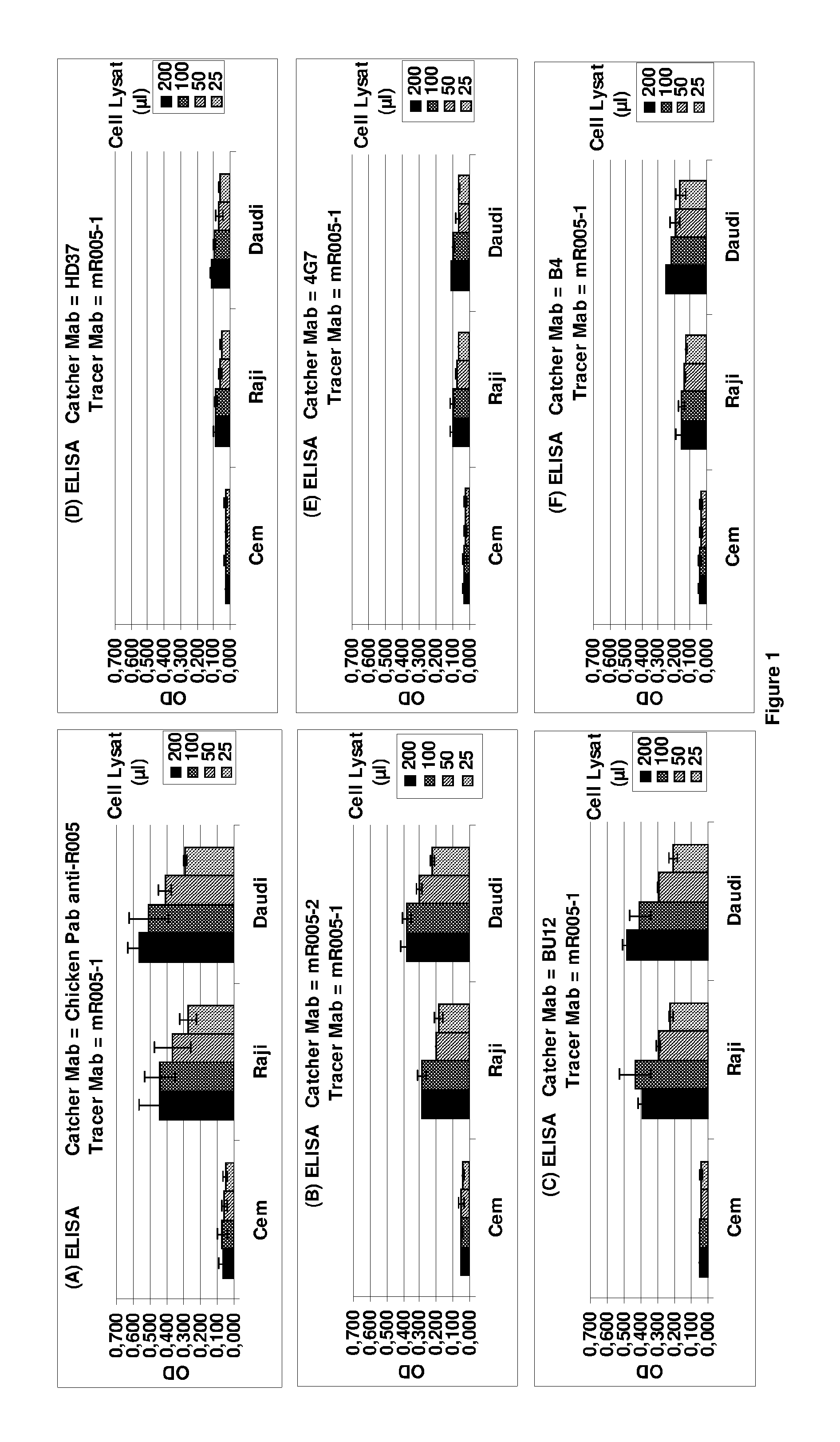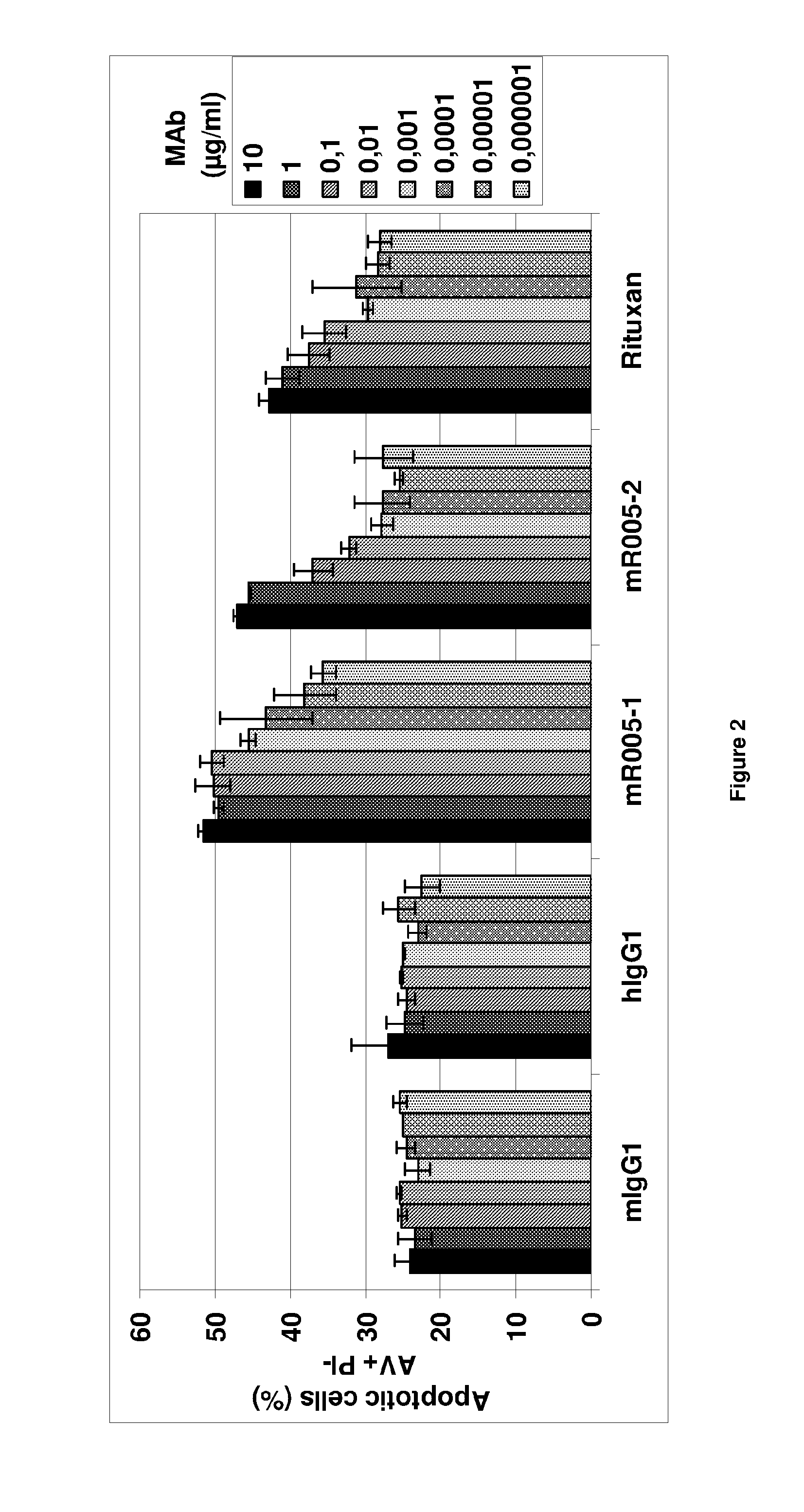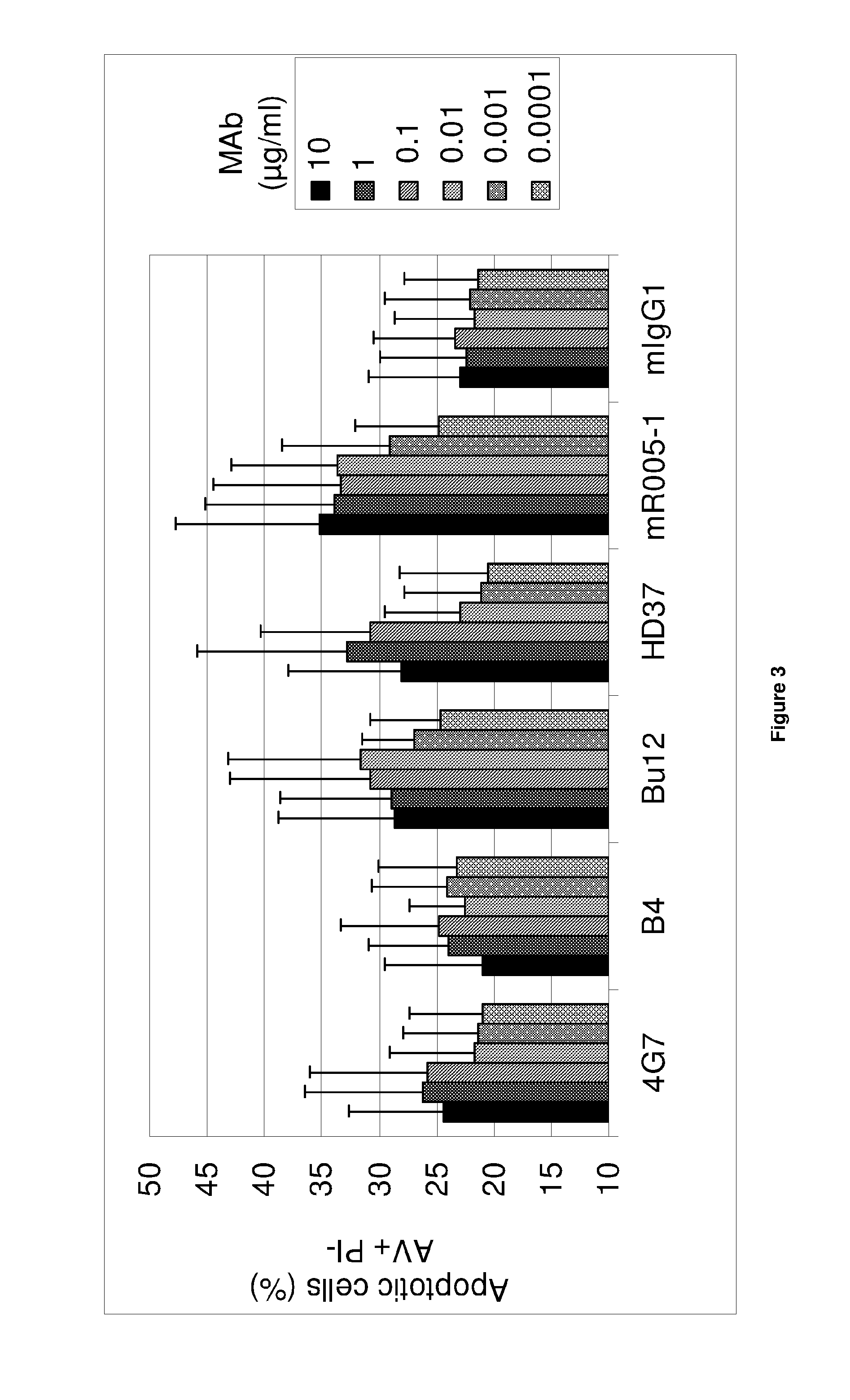Anti-cd19 antibody having adcc function with improved glycosylation profile
a technology of anti-cd19 and glycosylation profile, which is applied in the field of anti-cd19 antibodies, can solve the problems of loss or modulation of cd20 expression, significant toxicity, and resistance to rituximab treatmen
- Summary
- Abstract
- Description
- Claims
- Application Information
AI Technical Summary
Benefits of technology
Problems solved by technology
Method used
Image
Examples
Embodiment Construction
[0083]A first object of the present invention is an anti-CD19 antibody modified to comprise a variant human IgG Fc region, wherein this variant region comprises an amino acid substitution at each of the amino acid positions 243, 292, 300, 305 and 396 of the human IgG Fc region. The amino acid residues in the Fc region are numbered according to the numbering system of Kabat®. The antibody according to the invention does not comprise an amino acid substitution at the position 326 or at both positions 326 and 333.
[0084]The recombinant anti-CD19 antibodies according to the invention have an interesting glycosylation profile after production in a wild-type mammal cell, especially rodent cell, such as in particular a wild-type CHO.
[0085]In particular, from the transfected cells, e.g. wild-type CHO, the invention allows to express a large proportion of recombinant antibodies or fragment thereof, carrying a common N-linked oligosaccharide structure of a biantennary-type that comprises long ...
PUM
| Property | Measurement | Unit |
|---|---|---|
| molecular weight | aaaaa | aaaaa |
| OD | aaaaa | aaaaa |
| excitation wavelength | aaaaa | aaaaa |
Abstract
Description
Claims
Application Information
 Login to View More
Login to View More - R&D
- Intellectual Property
- Life Sciences
- Materials
- Tech Scout
- Unparalleled Data Quality
- Higher Quality Content
- 60% Fewer Hallucinations
Browse by: Latest US Patents, China's latest patents, Technical Efficacy Thesaurus, Application Domain, Technology Topic, Popular Technical Reports.
© 2025 PatSnap. All rights reserved.Legal|Privacy policy|Modern Slavery Act Transparency Statement|Sitemap|About US| Contact US: help@patsnap.com



